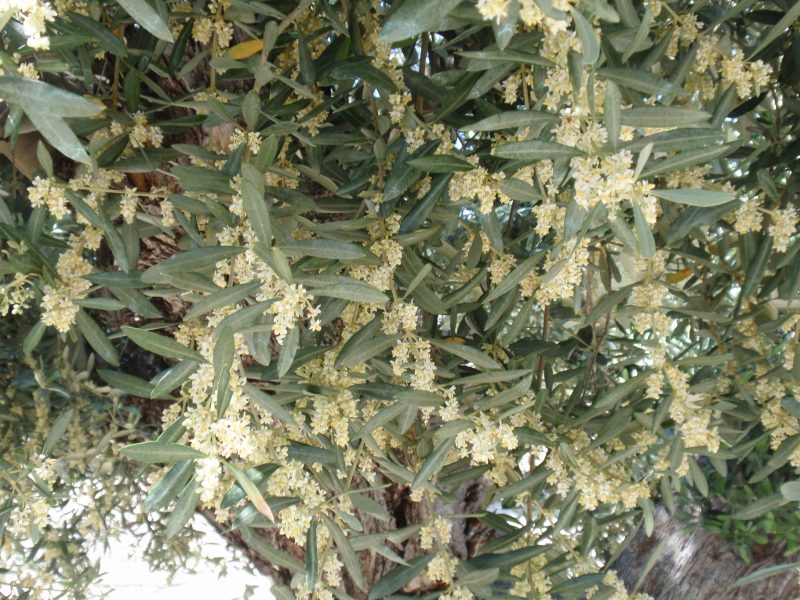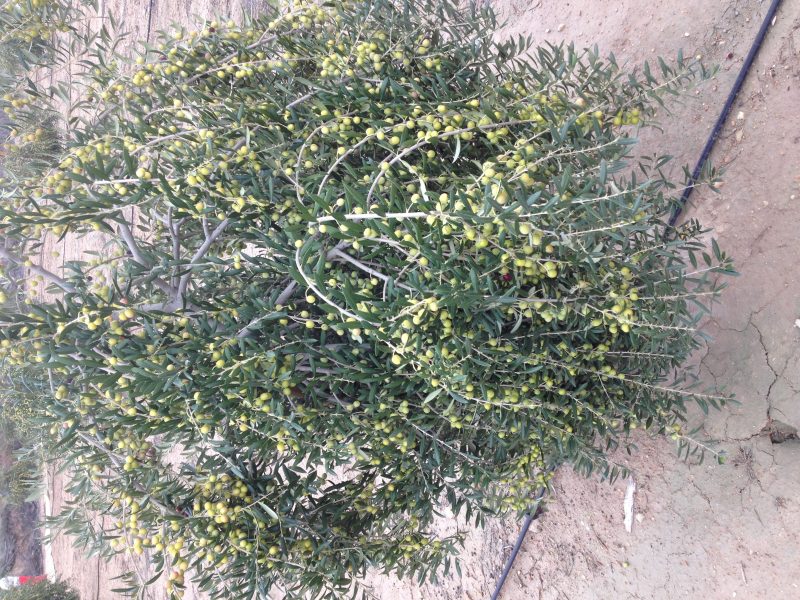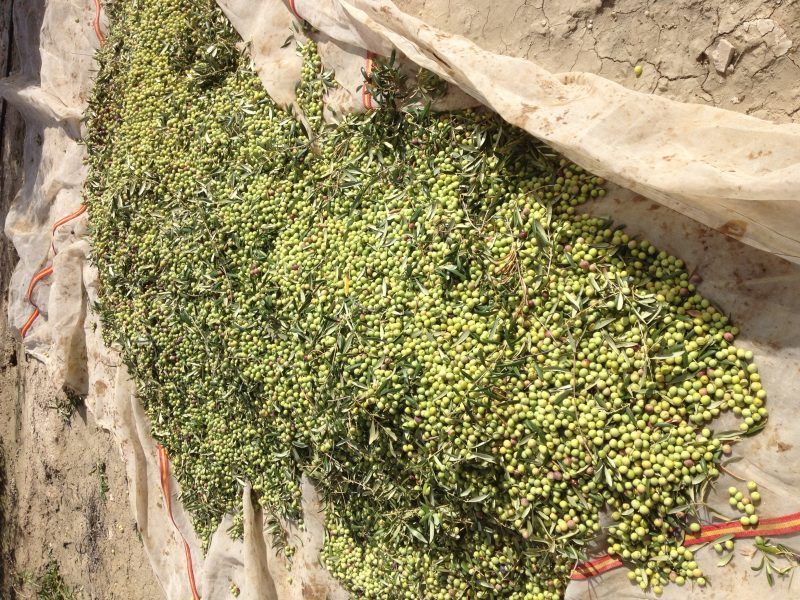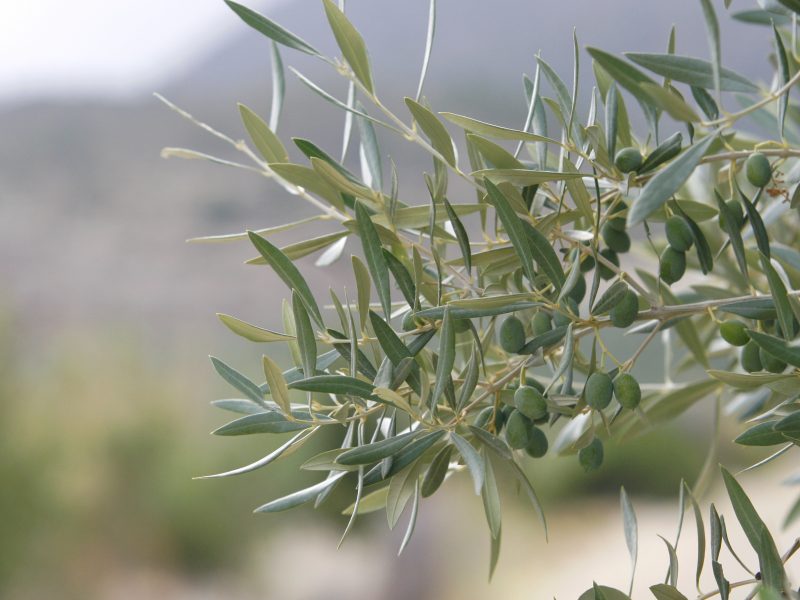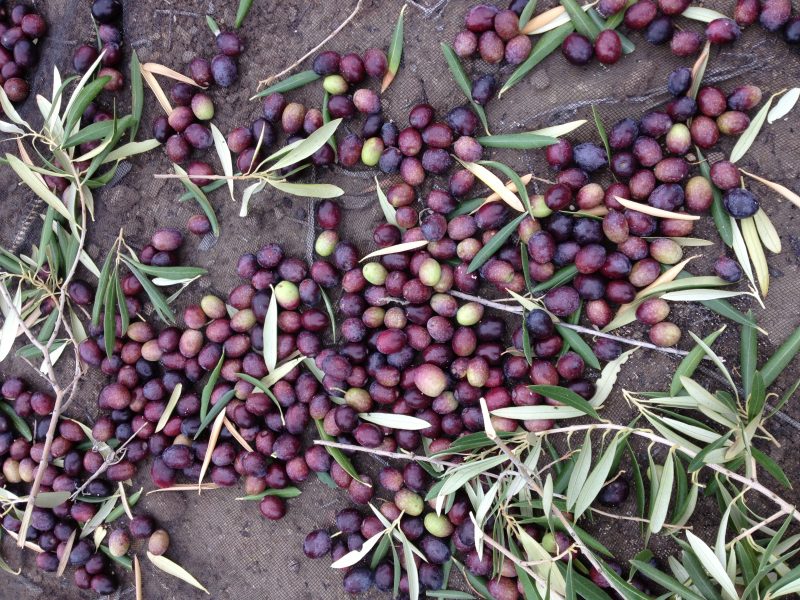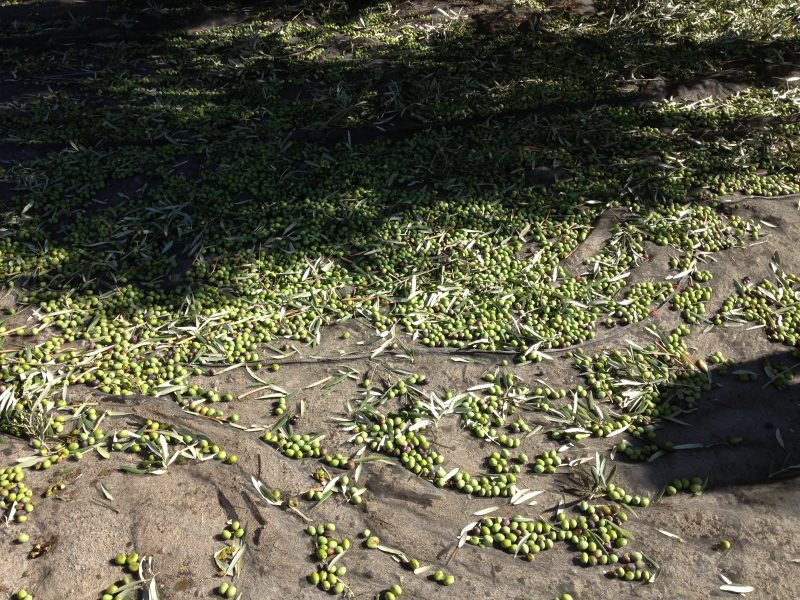The variety of an olive makes up the personality of an olive oil and their combination allows us to create infinite possibilities of flavours and pleasures for our palate. The varieties cultivated on our land compose our Extra Virgin Olive Oil: Manzanilla Villalonga, Arbequina, Blanqueta, Changlot Real, Alfafara y Genovesa. These varieties gives it its own and characteristic style, with an excellent fragrance and fresh fruity flavour in addition to balance, stability and total harmony that enable complex blends.
Some of these varieties are indigenous of the Alicante Mountains, which makes our oils unique.
MANZANILLA VILLALONGA
Origin and Distribution: It has its origins in the south of Valencia, it is the most common throughout the Valencian Community and is our most internationally known indigenous variety.
Agronomic Considerations: This variety has a high and constant production rate, and ripens early. Low loosening resistance. It is not very demanding when it comes to pruning. Very sensitive to frost, tolerates humid grounds and is sensitive to droughts.
Organoleptic Considerations: Proven quality oil with excellent sensorial attributes, aromatic herbs in nose with hints of green almond and banana. Its persistence stands out on the palate. High oil yield.
ARBEQUINA
Origin and Distribution: Since it began to be grown in Arberca (Lleida), it spread throughout Catalonia, making its producers be known. It is currently grown throughout Spain.
Agronomic Considerations: Rustic variety due to its resistance to cold and salinity. It is not very robust and its production is early, high and constant.
Organoleptic Considerations: It is an excellent extra virgin olive oil that is sweet and smooth with aromas and tastes of green almond, tomato, apple and herb. It has a pleasant hint of bitterness and spiciness and presents a yellow-green tonality.
BLANQUETA
Origin and Distribution: It is one of the most productive varieties grown in Valencia, and probably in Spain too. It has this name due to the whitish colour of the fruit when it ripens.
Agronomic Considerations: Its production is early and very regular. Its ripening is middle-late and spaced out. It is harvested early to avoid frosts, as the fruit is very sensitive, however the tree is resistant.
Organoleptic Considerations: Very high quality oil, very fruity in nose with a fresh and complex aroma, and hints of leaves, herb, almond, artichoke and banana. It has a characteristic bitter taste in the palate. Very high oil yield.
CHANGLOT REAL
Origin and Distribution: This is an indigenous Valencian variety of unknown origin. It is mainly grown in the regions of the Vinalopó basin.
Agronomic Considerations: A variety with an alternation of high and low-yield years. It adapts to different ground conditions. It has a middle ripening and is highly resistant to loosening, which makes mechanized collection difficult. Resists cold weather conditions and is not very sensitive to droughts.
Organoleptic Considerations: Oil with golden tonalities with aromas akin to green fruit and tomato, with a high polyphenol content so its degree of bitterness is high but balanced. High oil yield.
CHANGLOT REAL
Origin and Distribution: This is an indigenous Valencian variety of unknown origin. It is mainly grown in the regions of the Vinalopó basin.
Agronomic Considerations: A variety with an alternation of high and low-yield years. It adapts to different ground conditions. It has a middle ripening and is highly resistant to loosening, which makes mechanized collection difficult. Resists cold weather conditions and is not very sensitive to droughts.
Organoleptic Considerations: Oil with golden tonalities with aromas akin to green fruit and tomato, with a high polyphenol content so its degree of bitterness is high but balanced. High oil yield.
ALFAFARA
Origen y Distribución: It possibly originates from the town of Alfafar in Alicante and is grown in several regions in the south of the Valencian Community.
Agronomic Considerations: This variety has a high and constant production rate, although it enters production slowly. It ripens very late. It requires fresh and fertile land, it is not considered resistant to droughts. The tree resists frosts well, but not the fruit, which is very sensitive.
Organoleptic Considerations: Oil with golden tonalities, very fruity, aromatic and complex in nose with hints of green fruit. Its bitterness stands out on the palate. Low oleic content, rich in tocopherols and with high antioxidant properties. Medium to high oil yield.
GENOVESA
Origin and Distribution: Its origin is unknown and is mainly grown in the regions of La Costera and La Vall D’Albaida (Valencia); it is also found in the regions of L’Alacantí, Alt Vinalopó, El Comtat and La Marina Baixa, in Alicante.
Agronomic Considerations: This tree has a characteristic dark colour with thick leaves. Early and concentrated ripening. Adequate for fresh deep grounds. The fruit’s size is big, so the olives can be used both for consumption and to make oil.
Organoleptic Considerations: Very good quality oil, very stable due to its high oleic acid and polyphenol contents. Fruity with balanced bitter and spicy hints. High oil yield.
Tastings and Pairings, Culinary Experiences, Visits to the farmhouse and much more...
BOOK YOUR EXPERIENCE NOWFuncional Always active
Preferencias
Estadísticas
Marketing
WhatsApp!

